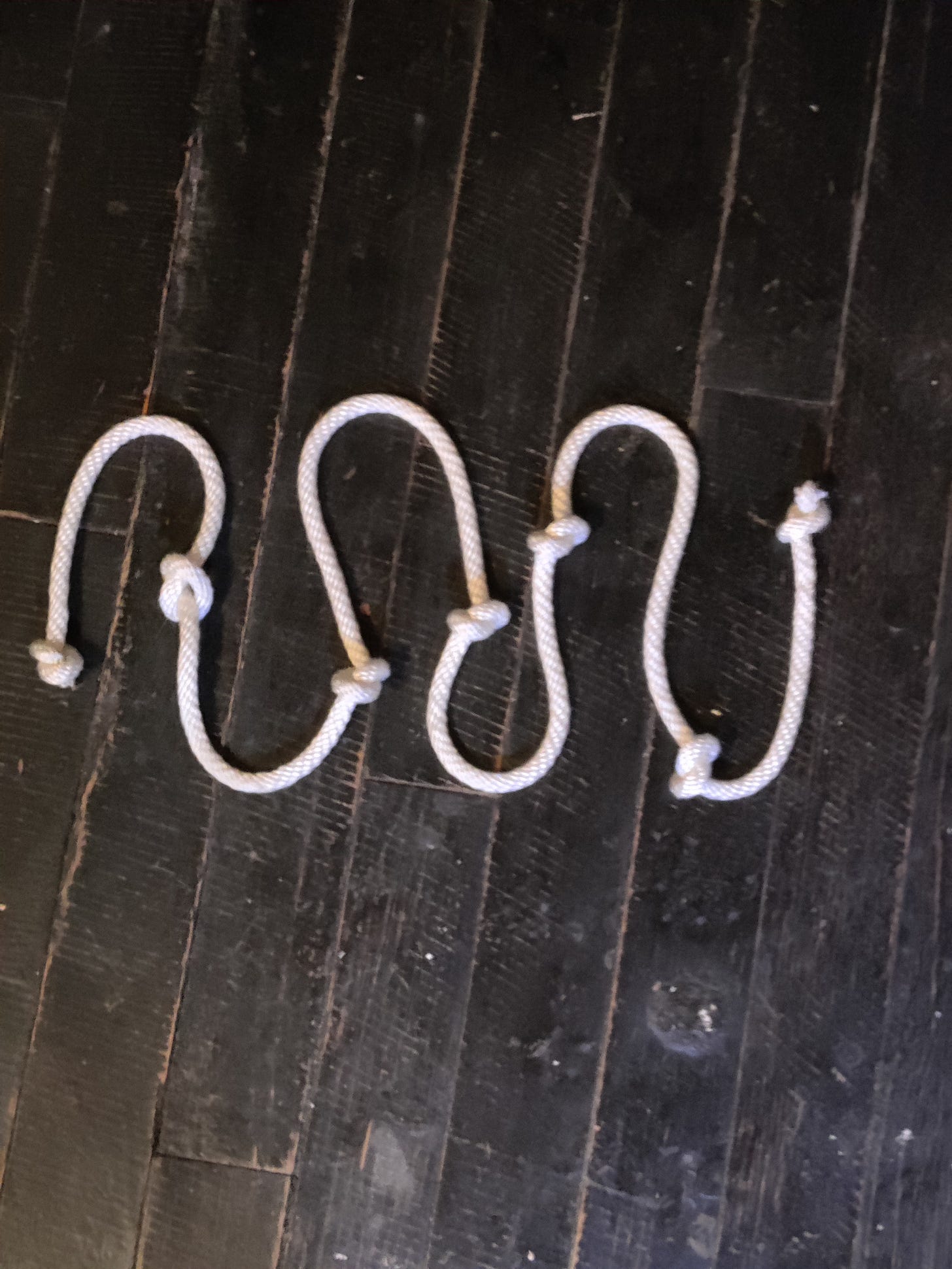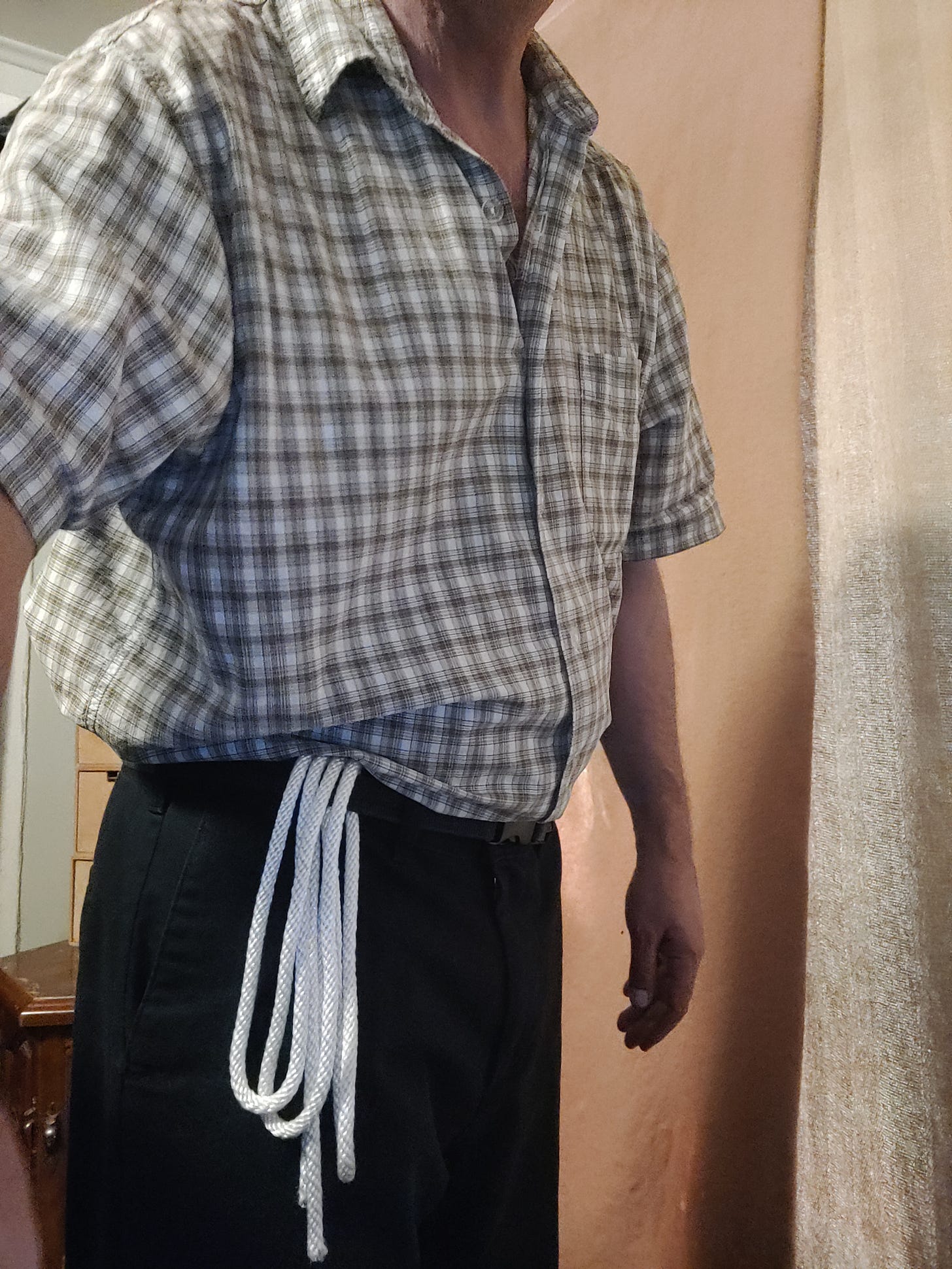This trick is perfect for the Wandering Magician. If you are on the road and you lose your rig, all you need is 6 1/2 feet of rope and now you have a show to make the money you need to replace your rig.
Here’s the new routine we’ll be discussing today.
If you’re ever in a tight spot, I believe, with a piece of rope, a deck of cards, and a coin, you could work all day and night on a street corner, or a bar, or at restaurant, table hopping.
No gimmicks necessary.
I normally put tricks in the middle of my show that aren’t as strong as the rest of my tricks. I have just recently pieced this routine together from several other routines I know, to act as a middle routine for my new table close up act, but to my surprise, it has been killing it every time.
It’s so strong I could put it anywhere, the secret to it’s success was The Character acting. It plays more as a bumbling old man demonstration than a magic trick.
This is exactly the trick I was looking for, something purely sleight of hand, no gimmicks, that has the appearance of skill and clowning.
In fact I believe it is so strong, it could hold it’s own as a one trick sandy, a trick where you walk down the sidewalk mingling until you stop somebody, then pull the rope from your belt. Like this.
And then just go to work, hat them, put the rope back under your belt, and move down the sidewalk looking for more watchers.
The tricks in the routine are all basic, most of which are beginner’s tricks, listed in Tarbell’s course in Magic and most other beginners books that have rope tricks. in them.
The thing that makes these tricks more commercial, is the infusion of a character and the subtleties and the pro handling, as in the case with the multiple knot production and the sliding vanishing knot. I would urge the reader to check out Volume 7. Mike Tannen’s sliding and vanishing knot.
These tricks are really a mish mash of moves to fit my story, I would strongly urge the reader to rearrange the order of the tricks (like I did) until you fall on an order that best fits your personal handling and character.
As far as rope goes most Magician’s use, Magician’s soft all white cotton bleached rope.
I don’t, it’s too expensive and difficult to get on the road. I use soft white Nylon rope from a hardware store or marine supplies for boaters. The trick is to wash it a number of times until it starts to roughen up and get a good bite to hold false knots better.
When Nylon is brand new out of the bag it’s too slick, and has a hard time holding a false knot.
Another advantage to Nylon is that this rope can be kept cleaner and fresher then cotton and only gets better to use after each washing, the cotton rope starts too fray and fall apart.
To prevent fraying with Nylon rope you simply take a lighter and melt the tips.
With cotton rope it is much more difficult and has to be maintained. You have to get Elmer’s white craft glue and fill the ends and tuck them in, so they don’t fray. Of course this is only temporary especially if you decided to wash them. What I used to do was to take a small piece of duct tape and tape the ends like a shoe lace.
But in the end it was to much work to be doing on the road, out on a sidewalk, so I went to Nylon. I discovered it one day, after it was the only rope I could find in town, and over the years I learned how to maintain it for work.
If you got a kick out of this you can leave me a tip here.
If you’re already a paid subscriber, lets take a look at how I do this and my thinking about the moves in the tutorial video below.


